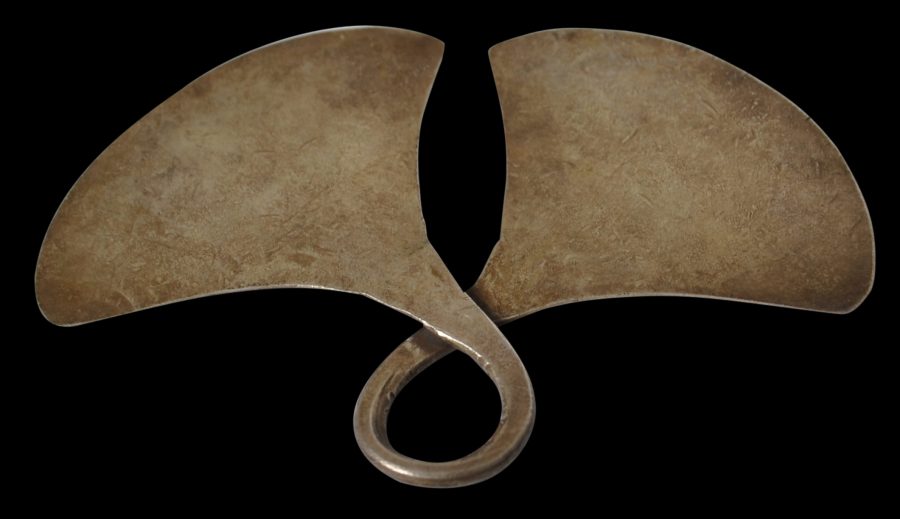This highly decorative pendant is of silver. Called a taka in the local Lio language, the construction is that of a ribbon with wide ends that has been crossed over itself. The ends have then been beaten flat. They are among the most valued heirloom items of the Ngada people of central Flores and tend to be handed down from generation to generation.
It is likely that such a form is a highly stylised version of the female reproductive organs and as such the wearing of such a pendant no doubt had fertility and talismanic properties.
According to Richter (2000, p. 209), the pendants were worn by both Ngada men and women suspended from chains attached to their headbands. The removal of a taka from its usual hiding place in the house roof required the blood sacrifice of a small animal, and a blood libation need to be sprinkled on the pendant before it could be worn.
See Granucci (2005, p. 124), Taylor & Aragon (1991, p. 220), Richter (2000, p. 209) and Richter & Carpenter (2012, p. 208) for related examples.
References
Granucci, A.F., The Art of the Lesser Sundas, Editions Didier Millet, 2005.
Richter, A., The Jewelry of Southeast Asia, Thames & Hudson, 2000.
Richter, A., & B. Carpenter, Gold Jewellery of the Indonesian Archipelago, Editions Didier Millet, 2012.
Taylor, P.M. & L.V. Aragon, Beyond the Java Sea: Art of Indonesia’s Outer Islands, National Museum of Natural History/Harry N. Abrams, Inc,1991.





